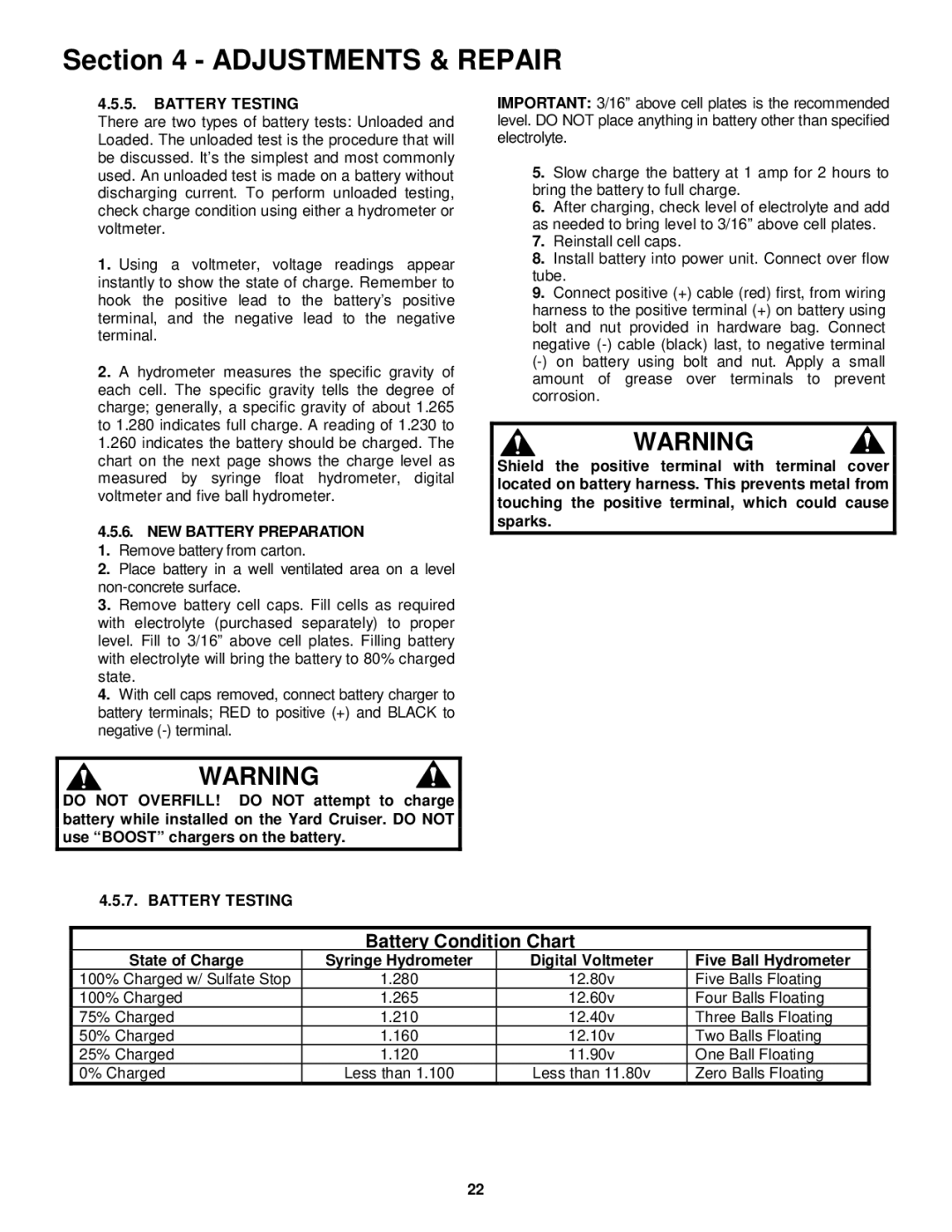YZ145332BVE, YZ145382BVE specifications
The Snapper YZ145332BVE and YZ145382BVE are two notable models in the Snapper lawn mower lineup, renowned for their innovative features and cutting-edge technologies. Designed with user convenience and performance in mind, both models cater to homeowners looking for reliable and efficient lawn care solutions.Starting with the YZ145332BVE, this model is equipped with a powerful 14.5 HP engine that ensures robust performance, allowing users to tackle even the toughest mowing tasks. The 33-inch cutting deck offers a balanced compromise between maneuverability and cutting width, making it ideal for both small and medium-sized lawns. One of the standout features of the YZ145332BVE is its adjustable cutting height, which provides users with the flexibility to choose between different grass lengths to suit their personal preferences or lawn conditions.
On the other hand, the YZ145382BVE model takes performance a notch higher with its enhanced 14.5 HP engine and a wider 38-inch cutting deck. This model is perfect for users with larger lawns, as it can cover more ground in less time, ultimately improving mowing efficiency. Like its counterpart, the YZ145382BVE also features an adjustable cutting height, allowing users to customize their mowing experience according to the specific needs of their lawn.
Both Snapper models boast a user-friendly design with easy-to-use controls, making them accessible to novice and experienced users alike. The intuitive operation of the mowers reduces the learning curve, enabling users to focus on getting their lawn care tasks done effectively. Additionally, Snapper's robust build quality ensures durability, making the YZ145332BVE and YZ145382BVE dependable companions for years to come.
Furthermore, the innovative technologies integrated into these models, such as the automatic transmission, provide seamless forward and reverse motion, further enhancing the ease of operation. Their lightweight design allows for easy maneuvering around obstacles, enabling users to navigate tight corners and difficult areas without hassle.
In summary, the Snapper YZ145332BVE and YZ145382BVE are prime examples of efficient, reliable, and user-friendly lawn mowers. With powerful engines, adjustable cutting heights, and advanced features, they are designed to meet the varying needs of homeowners. Whether you opt for the compact YZ145332BVE or the wider cutting deck of the YZ145382BVE, both models are engineered to deliver superior mowing performance for a well-maintained lawn.

